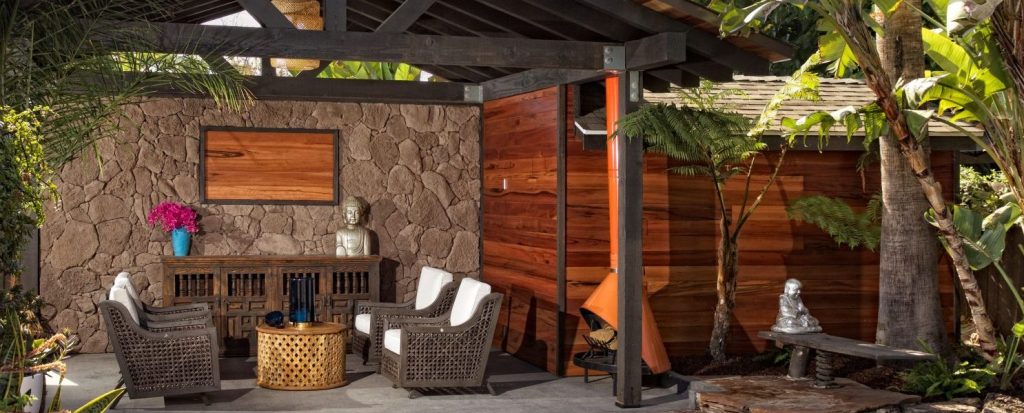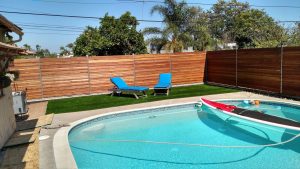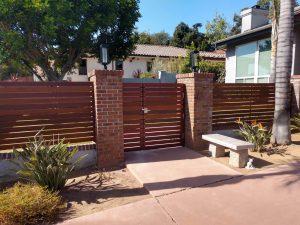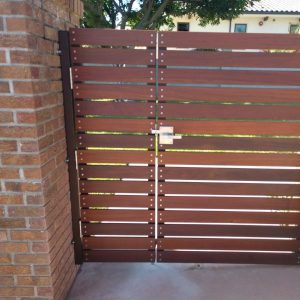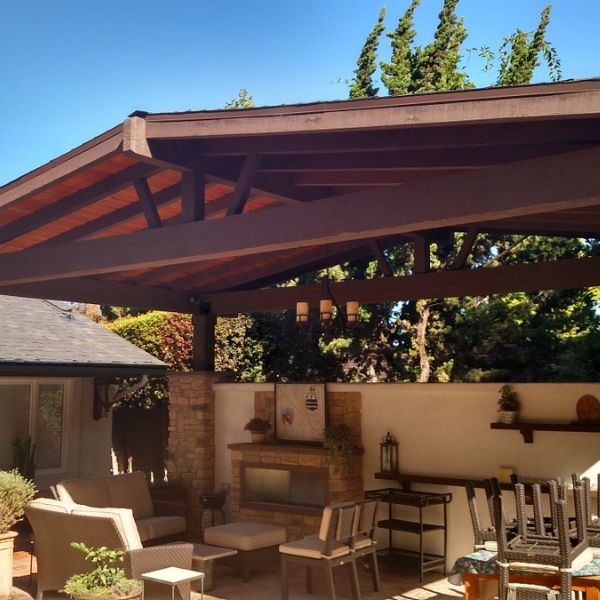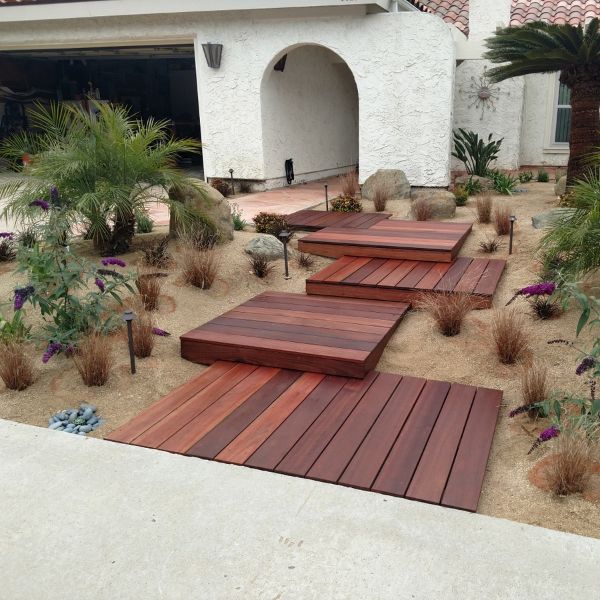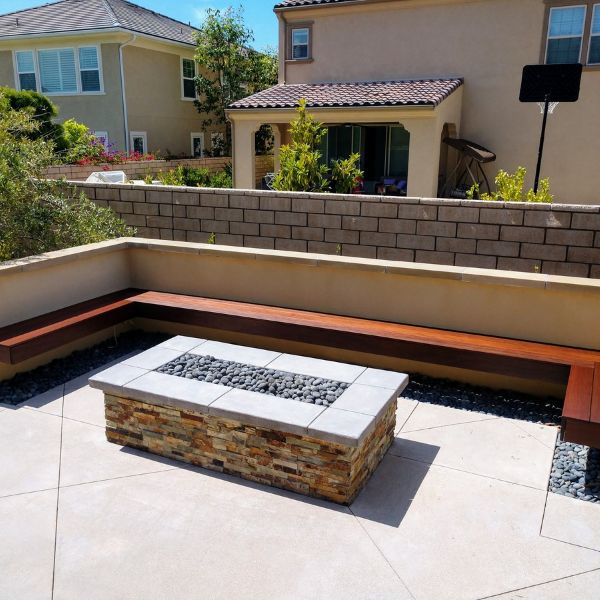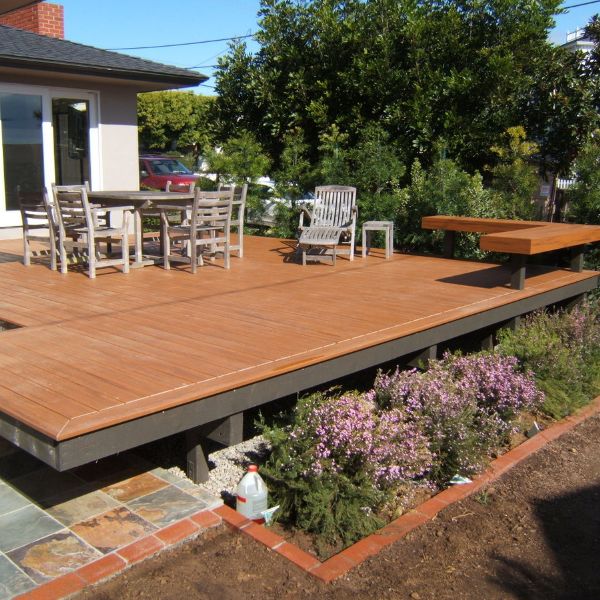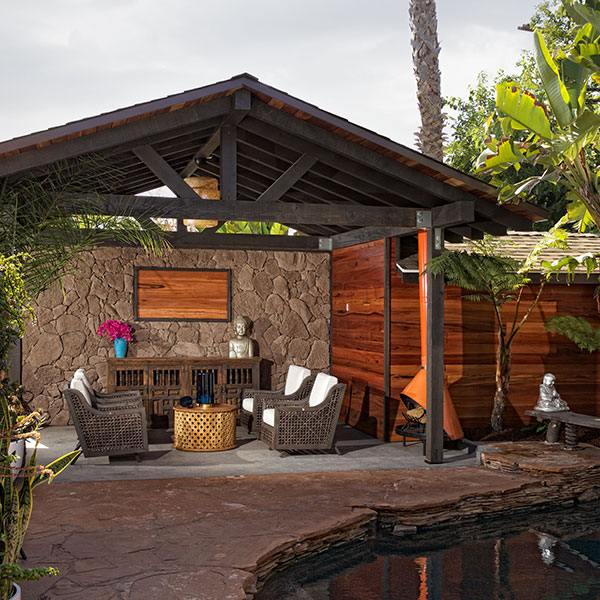Top 7 San Diego Wood Fence Styles for 2024
A stylish and functional wood fence can elevate your property’s curb appeal and provide privacy and security. But with so many styles of wood fences and customization options available, how do you choose the perfect fence for your needs? In this blog post, Wilson Woodscape we’ll explore the top wood fence styles of 2024, discuss customization options, and provide installation tips to help you create the perfect fence for your home.
The most popular wood fencing styles include:
- Classic wood fence styles, such as picket fences
- Horizontal designs
- Shadow box fences
- Post and rail fences
- Lattice fences
- Louver fences
- Board-on-board fences
Each of these styles offers distinct advantages in terms of aesthetics and functionality, making them suitable for various landscaping needs.
Classic Picket Fence
The classic picket fence is a timeless and inviting option for your front yard or garden. These fences are characterized by their widely spaced pickets with pointed tops and a charming aesthetic. They can be made of wood, vinyl, or even metal.
While picket fences may not provide the same level of privacy as privacy fences or other styles, they excel in enhancing your landscaping and elevating your home’s curb appeal. Cedar fences, especially the picket style, have a rustic charm that complements a variety of home styles and can be easily customized with paint or stain to match your home’s exterior.
Horizontal Wood Fence
For homeowners seeking a modern and sleek appearance, horizontal wood fences are an excellent choice. These fences consist of fence boards or planks spaced apart to allow for some visibility and are often constructed from woods like spruce and cedar. The horizontal design offers various customization options, from wood stains to striking combinations of materials, like cedar with exposed black metal posts.
Horizontal fences offer several benefits:
- They impart a modern aesthetic
- They ensure outstanding privacy and durability
- By adjusting the height and spacing of the boards, you can control the level of privacy
- They create a horizontal fence that suits your specific needs
- This wood fence style is perfect for those who want a modern look without sacrificing privacy and security.
Shadow Box Fence
The shadow box fence is a unique and visually interesting option that features:
- Alternating pickets and gaps, creating a “shadow” effect
- Subtle light and dark contrasts
- Both sides of the fence are identical, providing a uniform appearance for you and your neighbor.
Customization options for shadow box fences include wood stains and varying fence heights. Although this fence style may not provide as much privacy as a board-on-board or solid panel fence, it presents an appealing choice for homeowners seeking a blend of privacy and aesthetic appeal.
Post and Rail Fence
Post and rail fences are a simple and rustic option that’s ideal for rural properties and large landscapes. This type of fence is constructed by splitting logs lengthwise into long pieces and connecting them with one, two, or three rails. Post and rail fences offer a clear separation between properties and are commonly used for livestock containment.
These fences are:
- Fairly straightforward to install and maintain
- Need fewer fencing materials than a closely spaced picket fence
- Don’t provide the same level of privacy as some other styles
- Are a cost-effective and visually appealing option for large properties.
Lattice Fence
Lattice fences are a decorative and semi-private solution that’s perfect for gardens and climbing plants. These fences consist of intersecting strips of wood that create a visually appealing open-air pattern. Lattice fences can be used as full-size fences or as ornamental toppings for other fence styles.
Lattice fence panels are easily customizable to any desired size or shape, providing significant design versatility. In addition to their attractive appearance, lattice fences can also provide a certain degree of privacy in your yard, making them an excellent choice for enhancing your garden or outdoor living space.
Louver Fence
A louver fence is worth considering if you desire an ideal combination of privacy and airflow. These fences feature adjustable vertical slats that provide privacy when viewed straight on while allowing airflow and open views from the side. The modern and sophisticated aesthetic of louver fences makes them a popular choice for outdoor spaces.
Louver fences can be made from various materials, including wood, metal, and composite. With their unique design and customizable features, louver fences are an excellent option for those who want a stylish and functional wood fence.
Board-on-Board Fence
With their overlapping design, board-on-board fences provide optimal privacy. This fence style is ideal for shared property lines and secluded spaces, as it ensures complete privacy while maintaining an attractive appearance. The boards in a board-on-board fence overlap at the edges, creating a solid barrier that blocks any direct line of sight.
This fence style is an excellent choice for homeowners who prioritize privacy and security, as it provides a solid barrier without sacrificing aesthetics.
Customizing Your Wood Fence
After selecting your ideal wood fence style, you can personalize it with an array of customization options. Material selection, color choices, and treatments can all help you create a unique and personalized fence that complements your home and landscape.
We will delve deeper into these customization options in the subsequent sections.
Material Choices
Your choice of wood type for your fence will influence its durability and aesthetic appeal. Some popular options for wood fences are:
- Cedar: known for its natural beauty, color variety, and absorbency of paint and stain
- Redwood: resilient and resistant to rot, insects, and weather-related damage
- Pressure-treated pine: durable and resistant to rot, insects, and weather-related damage
Consider these options when selecting the types of wood for your fence to ensure it meets your needs and preferences.
Each wood material has its advantages with cedar, redwood, and pressure-treated pine offering varying price points. When selecting the best wood material for your fence, consider factors such as durability, appearance, and budget to ensure a perfect fit.
Color Options
The choice of color significantly enhances the look of your wood fence and complements your home’s exterior. Both natural wood stains and vibrant paint colors are available to help you achieve your desired look. Natural wood stains can range from light to dark hues, while paint colors offer a wide variety of shades, from timeless white to bold greens, blues, and yellows.
Some popular color options for wood fences include:
- Classic white
- Brown paint
- Gray stain
- Greenwood stain
- Warm cedar
- Rich redwood
- Dark chocolate
- Cordova brown
- Chestnut
- Antique brass
Experiment with different colors to find the perfect match for your home and landscape.
Treatments and Maintenance
Appropriate treatments and regular maintenance are key to prolonging your wood fence’s lifespan. Sealing, staining, and painting are all options to protect your fence from the elements and prevent rot and decay. Regular cleaning and inspection for damage are also essential to keep your fence in good condition.
Sealing a wood fence protects it from rain, snow, and sun, while staining enhances its natural beauty and provides additional protection. Regardless of the treatment you choose, maintaining your wood fence will help prolong its lifespan and keep it looking its best for years to come.
Enhancing Your Wood Fence with Accessories
With your ideal wood fence style and customization options set, you can now augment your fence with various accessories. Fence toppers, gates, and lighting solutions can all add functionality and style to your fence.
Fence Toppers
Fence toppers are decorative elements that can be added to your existing fence to provide additional privacy and a unique aesthetic. They come in a variety of styles, such as:
- lattice fence toppers
- square lattice fence toppers
- wood-poly composite fence toppers
- diamond lattice fence toppers
- corrugated metal fence toppers
- spindle tops
- curved tops
These toppers are typically constructed of:
- Wood
- Vinyl
- Wrought iron
- Powder-coated aluminum
- Composite materials
Installing fence toppers is relatively simple, as they can be affixed to the top of existing fence posts.
Fence toppers are a great way to add a personal touch and additional privacy to your wood fence, such as cedar privacy fences.
Gates
Adding gates to your wood fence design facilitates easy property access and bolsters security. Gates can be constructed from a variety of materials, including wood, metal, and vinyl fences, to complement your fence style.
There are many gate options available, such as:
- Sliding gates
- Swing gates
- Bi-fold gates
- Vertical gates
- Pedestrian gates
- Turnstile gates
- Vertical pivot gates
- Retractable security gates
- Automatic gates
Whether you prefer a manual gate for cost savings and simplicity or an automatic gate for added convenience and security, there’s a gate option to suit your needs.
Lighting Solutions
Various lighting solutions can light up your fence and nearby landscape, fostering ambiance and safety in your outdoor area. Solar-powered lights, LED lights, and traditional electric lights are all options for your wood fence.
In addition to general lighting, you can also incorporate post cap lights, which are mounted on the top of fence posts for a decorative touch and additional lighting. String lights can be used to create a festive atmosphere, suspended from a fence or other structure.
With the right lighting, your wood fence will not only look great during the day but also provide a warm and inviting atmosphere at night.
Tools and Materials
Before commencing your wood fence installation, ensure you have the required tools and materials. These include:
- Posts
- Rails
- Pickets
- Fasteners
- Digging equipment like a post-hole digger
Each tool and material serves a specific purpose in the fence construction process, so it’s crucial to select the right size, weight, and durability to ensure the best results.
When using tools and materials, always remember to:
- Read the instructions carefully
- Adhere to safety protocols
- Wear protective gear when necessary
- Use proper techniques to ensure a safe and efficient installation process.
Post Placement and Spacing
Correct post placement and spacing are vital for a robust and durable fence structure. For optimal stability, fence posts should be placed below the frost line and spaced 5 to 8 feet apart, with a minimum depth of two feet. Adding gravel for drainage at the bottom of the post hole is also recommended.
To determine the exact spacing for your fence posts, measure the length of your fence and divide it by the number of posts you plan to install. By following these guidelines, you’ll ensure a stable and durable fence that will stand the test of time.
DIY vs. Professional Installation
Regarding fence installation, you can either undertake the project yourself (DIY) and make numerous trips to your local hardware store or engage a professional landscape contractor. Both options have their advantages and drawbacks, depending on your specific needs and budget.
DIY installation can be cost-effective and provide you with full control over the project, but it requires a significant amount of time, effort, and potential mistakes. On the other hand, professional installation guarantees a quick and efficient process and ensures the fence is installed correctly, although it may be more expensive.
Ultimately, the choice between DIY and professional installation depends on your preferences, budget, and level of expertise.
Contact Wilson Woodscape Today
If you’re ready to get started on your fencing project, contact Jeff Wilson, our San Diego Landscape contractor, today. He’ll help you bring your vision to life. Call us today at 619-838-1398 or fill out the online contact form, and we’ll get back to you shortly.
Frequently Asked Questions
What are the styles of wood fencing?
Wood fences come in a variety of styles, such as picket, shadowbox, framed, vinyl panel, wood lattice, louver, vertical board, ornamental, composite wood, and split rail. These provide privacy and range from classic white picket fences to more elaborate security fences.
What is the most popular style of fence?
Dog ear fences are the most popular style of fence due to their simple, inexpensive design and resemblance to other privacy fence types.
What is the best type of wood for a fence?
Redwood is considered the best type of wood for fencing due to its durability, quality, and aesthetic value. Cedar can last between 15 and 30 years, or up to 40 if treated, while treated pine can last about 20 years. Redwood typically lasts around 25 years.
What are the ways to personalize my fence?
Personalizing your fence can be achieved by selecting appropriate materials, opting for a color that matches your preferences, and applying treatments that best fit your specific requirements.
What types of gates can I incorporate into my wood fence design?
When designing a wood fence, incorporating a gate constructed from wood, metal, or vinyl is an ideal option to enhance its overall aesthetic appeal.

